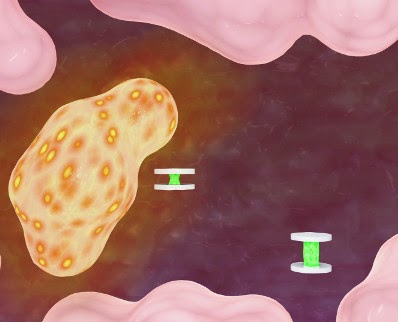 |
| Image Source: NIST |
Topics: Biology, Diagnostics, Engineering, Medicine, Nanotechnology
Scientists working at the National Institute of Standards and Technology (NIST) and the National Institutes of Health (NIH) have devised and demonstrated a new, shape-shifting probe, about one-hundredth as wide as a human hair, which is capable of sensitive, high-resolution remote biological sensing that is not possible with current technology. If eventually put into widespread use, the design could have a major impact on research in medicine, chemistry, biology and engineering. Ultimately, it might be used in clinical diagnostics.
To date, most efforts to image highly localized biochemical conditions such as abnormal pH* and ion concentration—critical markers for many disorders—rely on various nanosensors that are probed using light at optical frequencies. But the sensitivity and resolution of the resulting optical signals decrease rapidly with increasing depth into the body. That has limited most applications to less obscured, more optically accessible regions.
The new shape-shifting probe devices, described online in the journal Nature,** are not subject to those limitations. They make it possible to detect and measure localized conditions on the molecular scale deep within tissues, and to observe how they change in real time.
NIST: Shape-Shifting Sensor Can Report Conditions from Deep in the Body, Michael Baum
Comments